| Ligne 3 : | Ligne 3 : | ||
|Main_Picture_annotation={"version":"3.5.0","objects":[{"type":"image","version":"3.5.0","originX":"left","originY":"top","left":-32,"top":-1,"width":1280,"height":853,"fill":"rgb(0,0,0)","stroke":null,"strokeWidth":0,"strokeDashArray":null,"strokeLineCap":"butt","strokeDashOffset":0,"strokeLineJoin":"miter","strokeMiterLimit":4,"scaleX":0.53,"scaleY":0.53,"angle":0,"flipX":false,"flipY":false,"opacity":1,"shadow":null,"visible":true,"clipTo":null,"backgroundColor":"","fillRule":"nonzero","paintFirst":"fill","globalCompositeOperation":"source-over","transformMatrix":null,"skewX":0,"skewY":0,"crossOrigin":"","cropX":0,"cropY":0,"src":"https://wikifab.org/images/9/9a/COREMO_TRAILER_-_Community_Repair_Mobile_1.jpg","filters":[]}],"height":450,"width":600} | |Main_Picture_annotation={"version":"3.5.0","objects":[{"type":"image","version":"3.5.0","originX":"left","originY":"top","left":-32,"top":-1,"width":1280,"height":853,"fill":"rgb(0,0,0)","stroke":null,"strokeWidth":0,"strokeDashArray":null,"strokeLineCap":"butt","strokeDashOffset":0,"strokeLineJoin":"miter","strokeMiterLimit":4,"scaleX":0.53,"scaleY":0.53,"angle":0,"flipX":false,"flipY":false,"opacity":1,"shadow":null,"visible":true,"clipTo":null,"backgroundColor":"","fillRule":"nonzero","paintFirst":"fill","globalCompositeOperation":"source-over","transformMatrix":null,"skewX":0,"skewY":0,"crossOrigin":"","cropX":0,"cropY":0,"src":"https://wikifab.org/images/9/9a/COREMO_TRAILER_-_Community_Repair_Mobile_1.jpg","filters":[]}],"height":450,"width":600} | ||
|Licences=Attribution-ShareAlike (CC BY-SA) | |Licences=Attribution-ShareAlike (CC BY-SA) | ||
| − | |Description=<translate>First Prototype of a Community Repair Mobile Trailer | + | |Description=<translate>First Prototype of a Community Repair Mobile (COREMO) Trailer designed to provide repair services by means of #ASKotec (Access to Skills and Knowledge - open tech emergency case) and other mobile makerspaces in remote areas with difficult road access. (Currently developed in Kenya)</translate> |
|Area=Machines and Tools, Recycling and Upcycling, Transport and Mobility | |Area=Machines and Tools, Recycling and Upcycling, Transport and Mobility | ||
|Type=Creation | |Type=Creation | ||
Version du 19 avril 2024 à 15:09
Sommaire
- 1 Introduction
- 2 Étape 1 - Drafting the metal frame
- 3 Étape 2 - Preparing the parts
- 4 Étape 3 - Welding the metal frame
- 5 Étape 4 - Detail: Building the Coupling
- 6 Étape 5 - Building the Side Frames
- 7 Étape 6 - Cut the wooden Side Panels
- 8 Étape 7 - Detail: All connectors for wheels and frames
- 9 Étape 8 - Painting the Frame
- 10 Étape 9 - Assembling the Frame
- 11 Étape 10 - Finishing the Side Panels
- 12 Étape 11 - Assebling the final Trailer
- 13 Commentaires
Introduction
This Step-by-Step Tutorial serves as Open Source instruction for a Proof of Concept Prototype for a Community Repair Mobile (Trailer Edition) for remote areas (currently applied in Kenya) and will provide the option of repair services through the use of the #ASKotec (Access to Skills and Knowledge - open tech emergency case) and other mobile makerspaces/toolkits. (currently developed in Kenya by Adam Abdumalik with support from international community members).
This serves as a stage 1 solution for more variations, modules and adaptations to come as of:
- Solar Power (Soldering, Charging, etc.)
- Solar Electric Mobility
- Scaling production, decentralised and Open Source implementation
- Share your thoughts and comments as we update the documentation
Étape 1 - Drafting the metal frame
In order to fit the bicycle selected, the frame should match typical sizes of bikes.
Step 1 therefore is collecting material, sketching in size and measurement of all parts, cutting it to size and bending the tubes.
Étape 7 - Detail: All connectors for wheels and frames
- For Side Frames
- For Wheels
- For Strap-Connectors
Étape 9 - Assembling the Frame
- All Walls and Panels and Wheels for test fitting and preparing for panel painting
Étape 10 - Finishing the Side Panels
- Paint the side panels to give it some character
- Fix the panels with Zip Ties
- add your first tools (e.g. an #ASKotec)
- final touches to the Frame/Trailer
Published
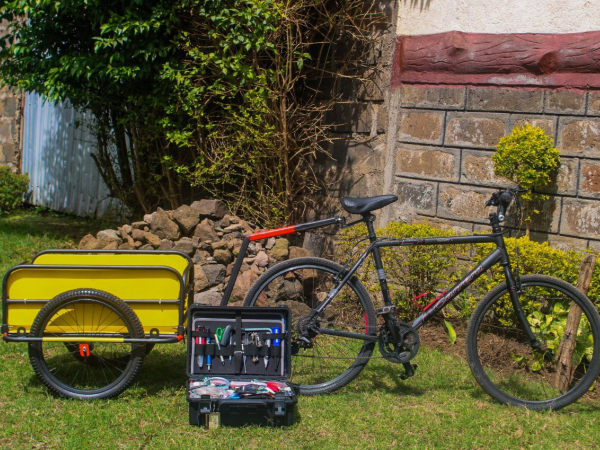
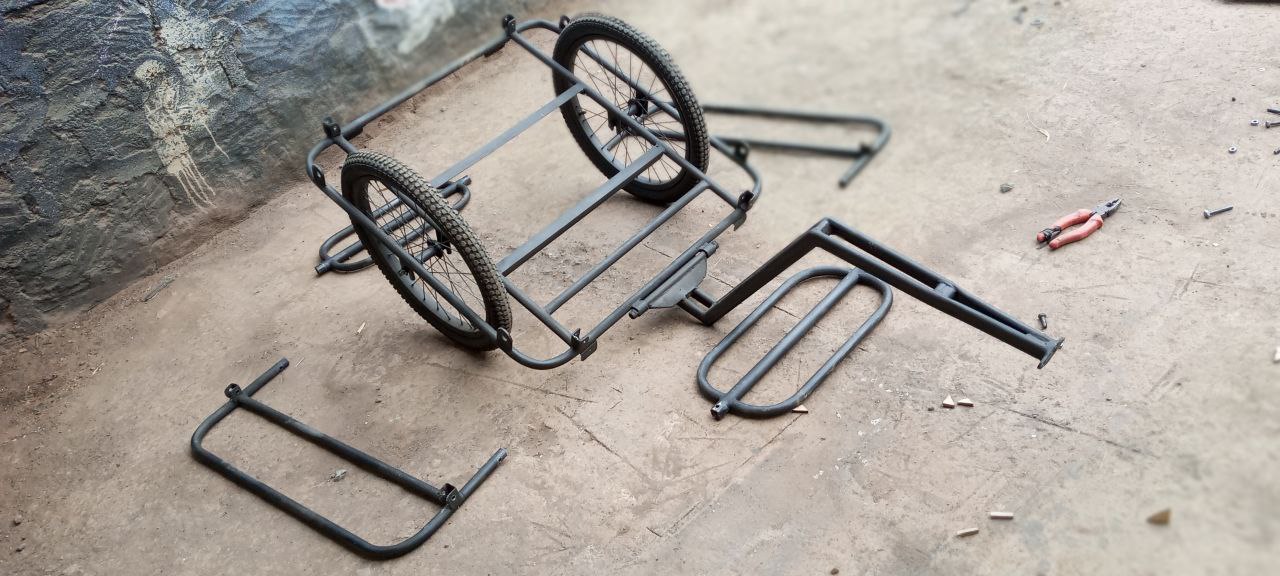
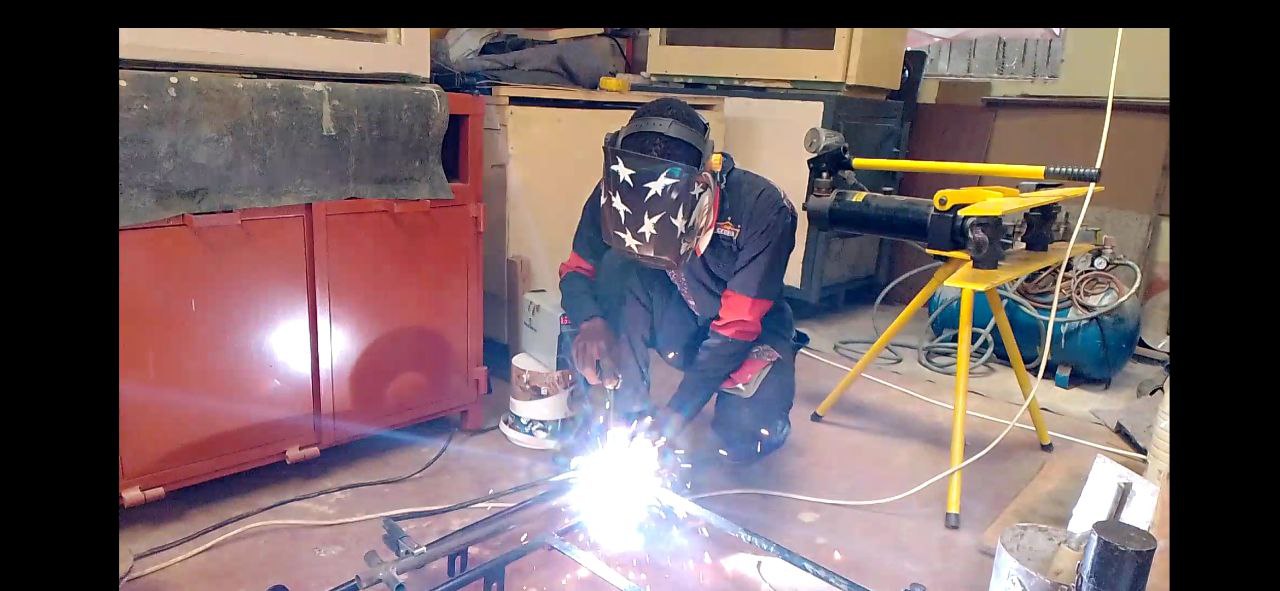
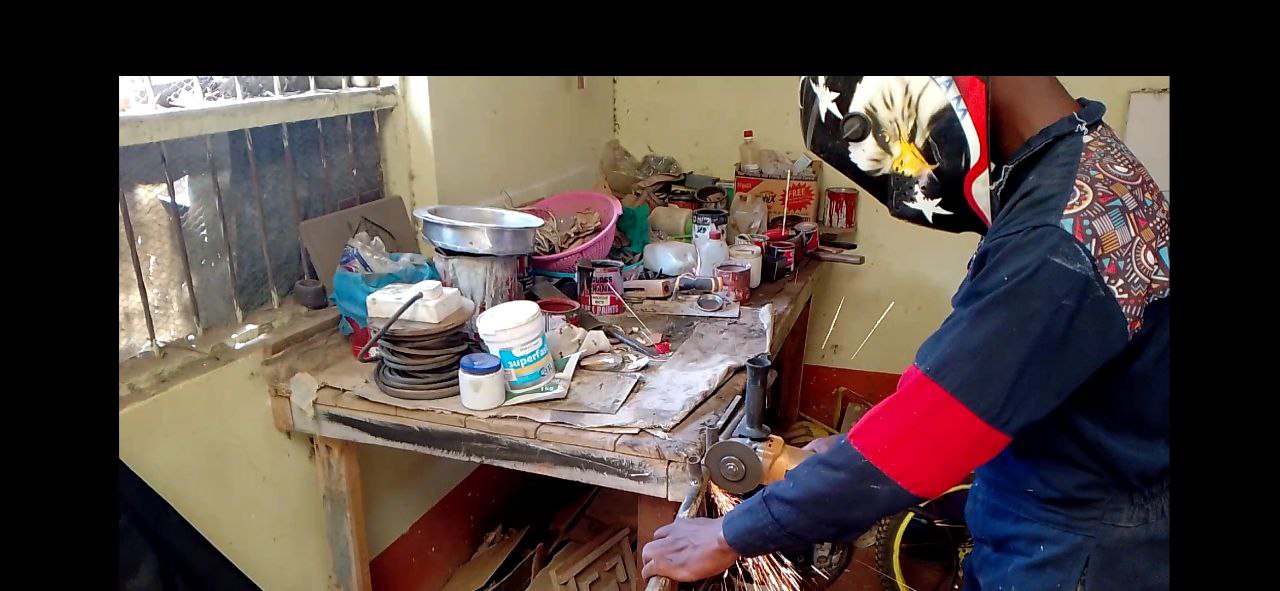
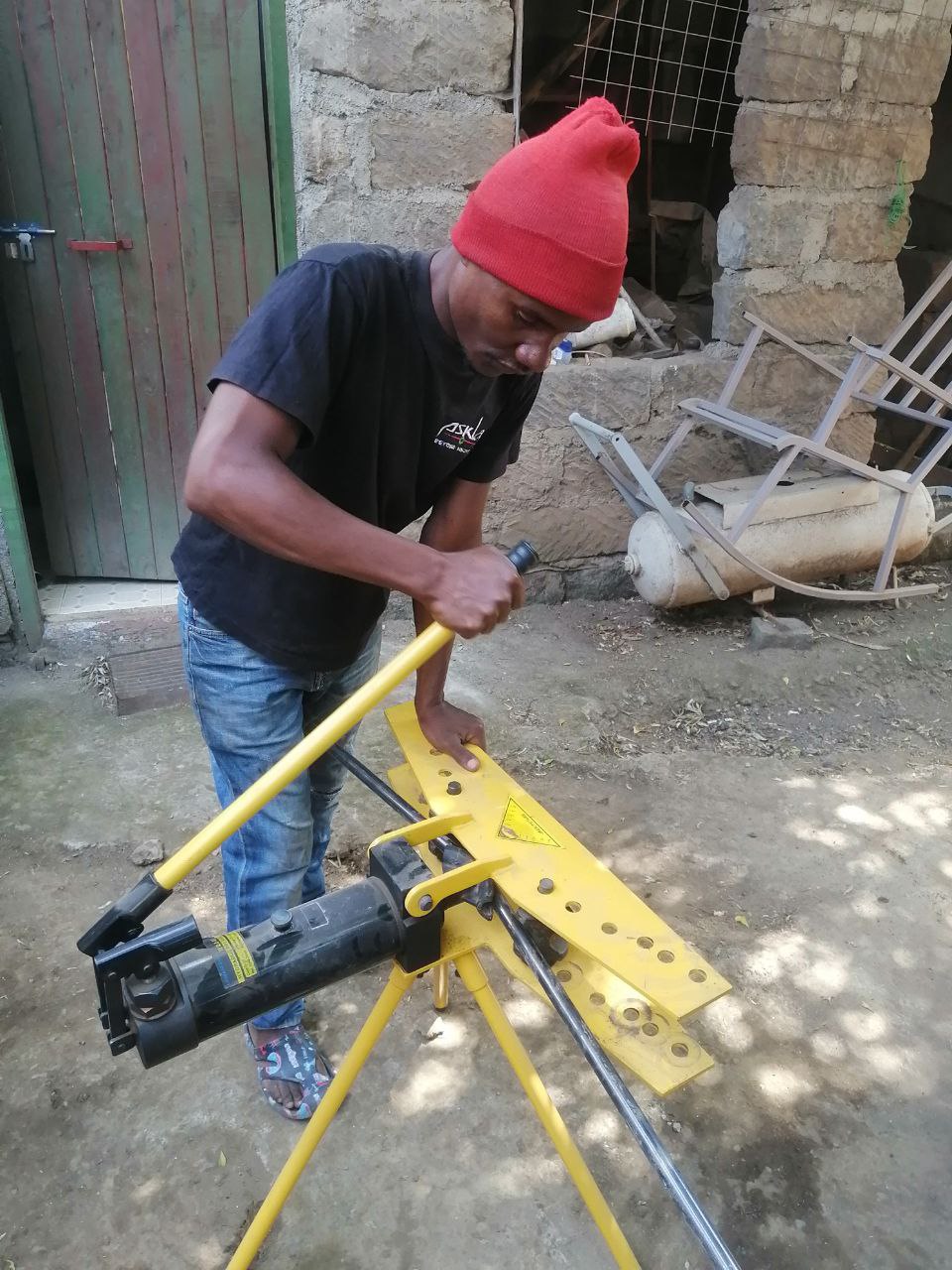
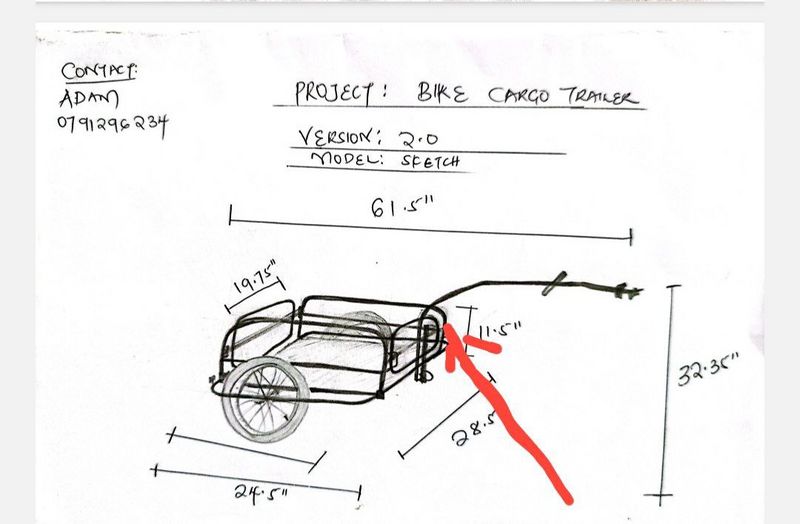
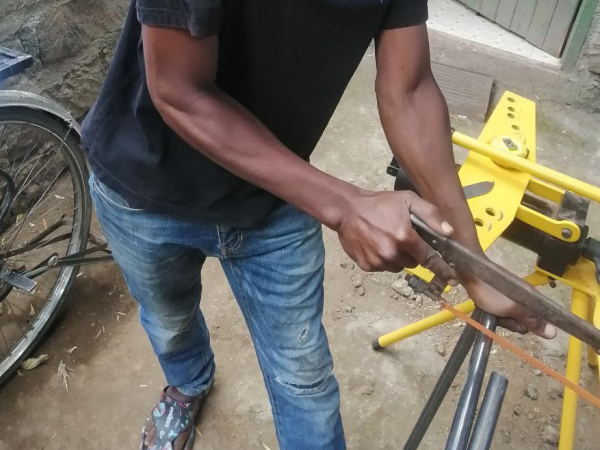
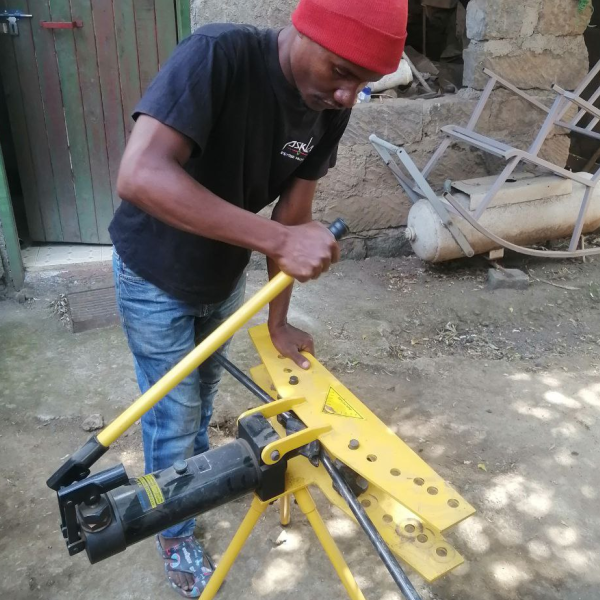
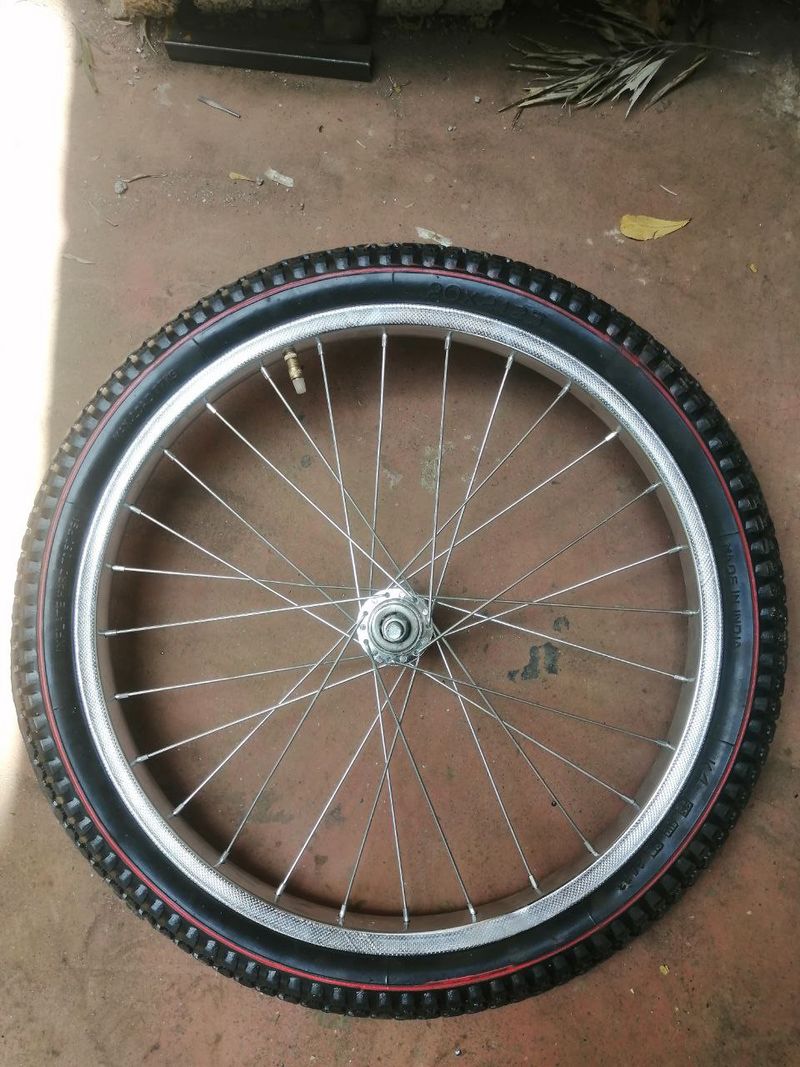
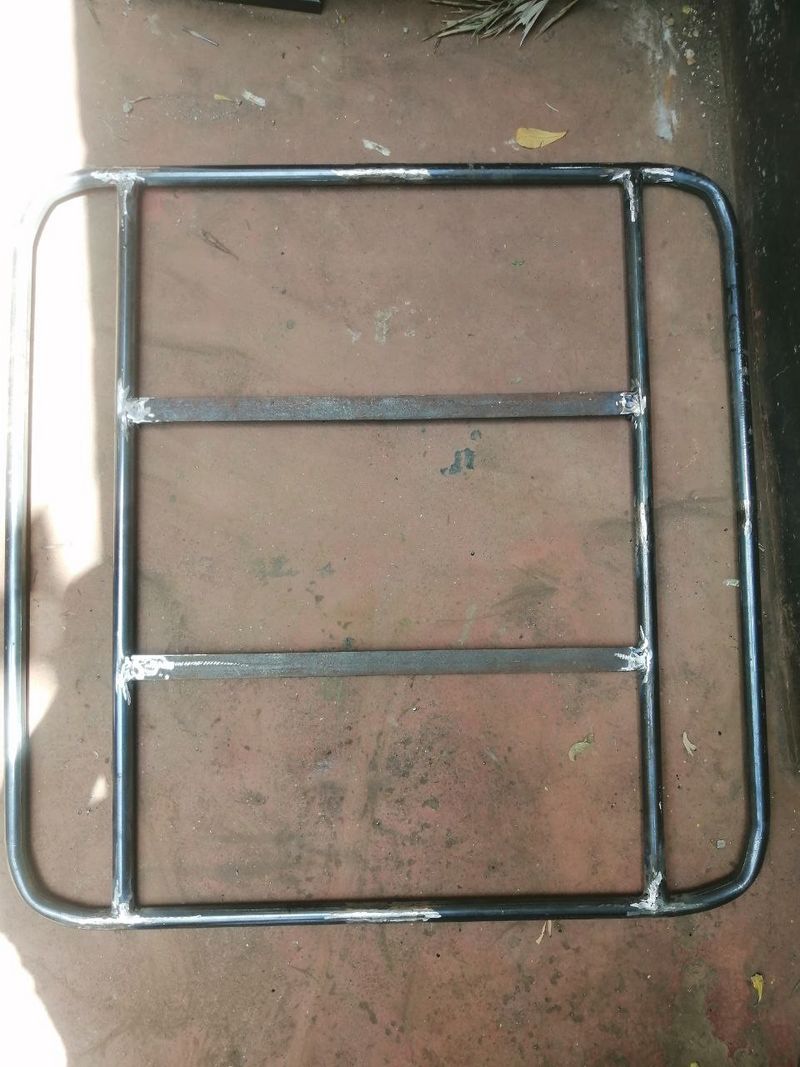
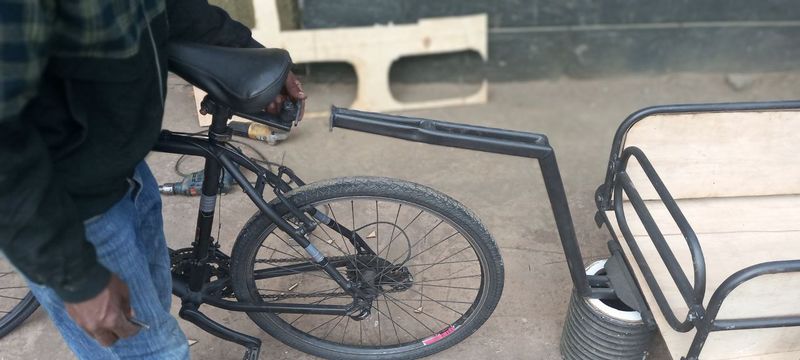
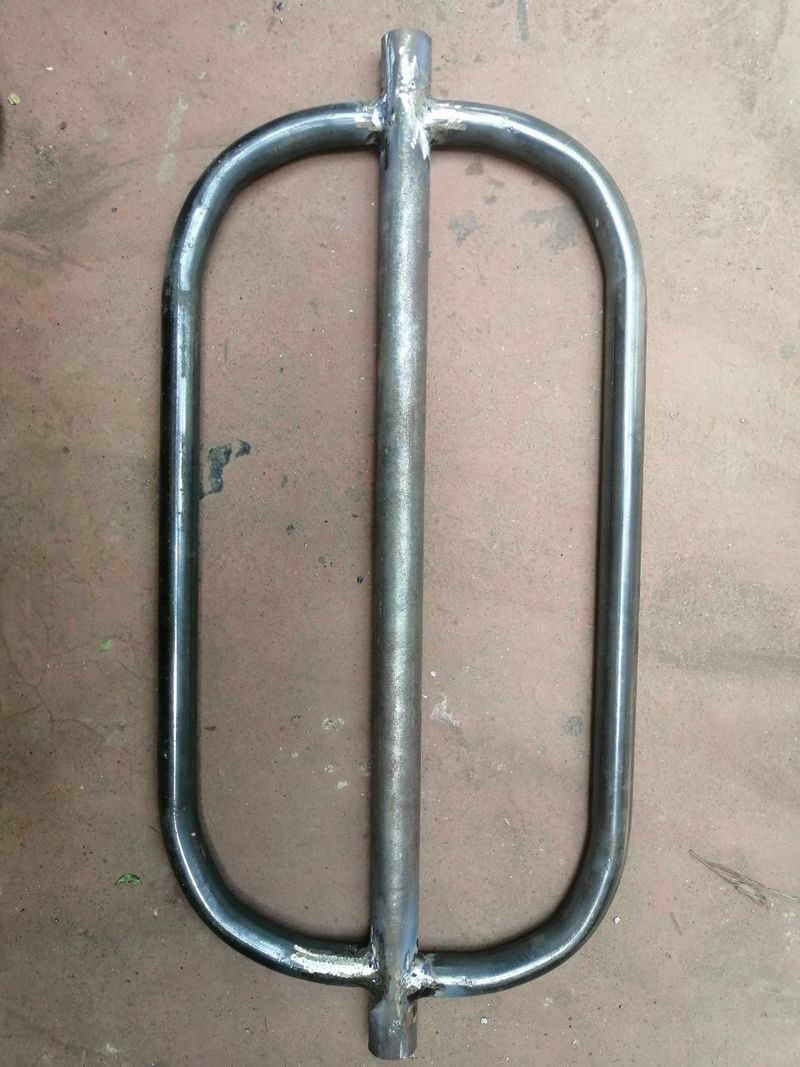
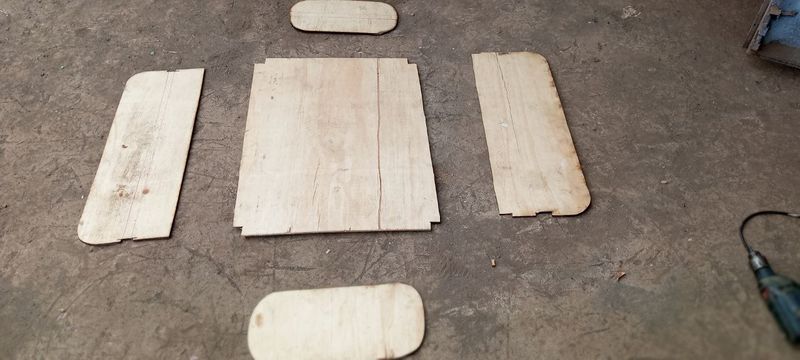
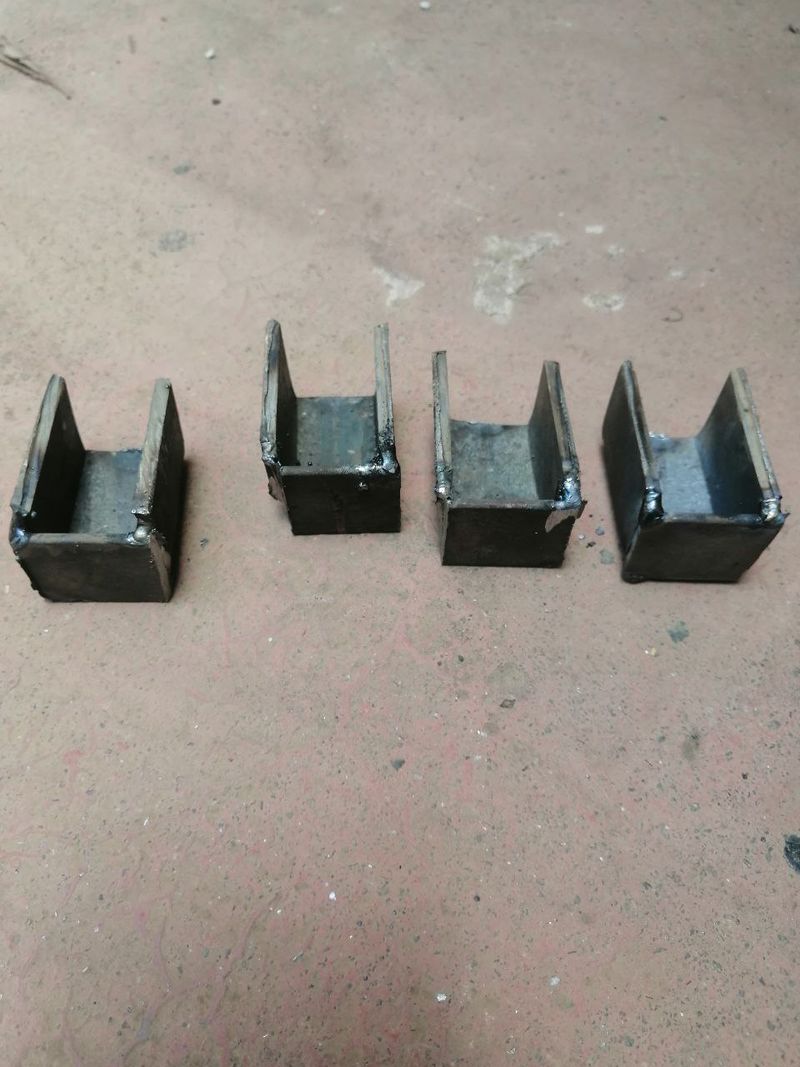
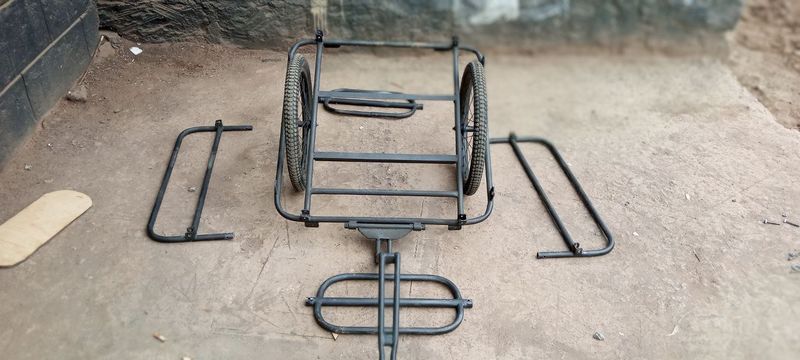
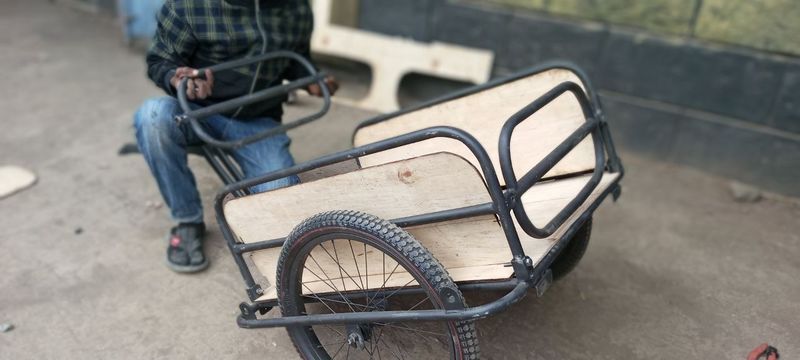
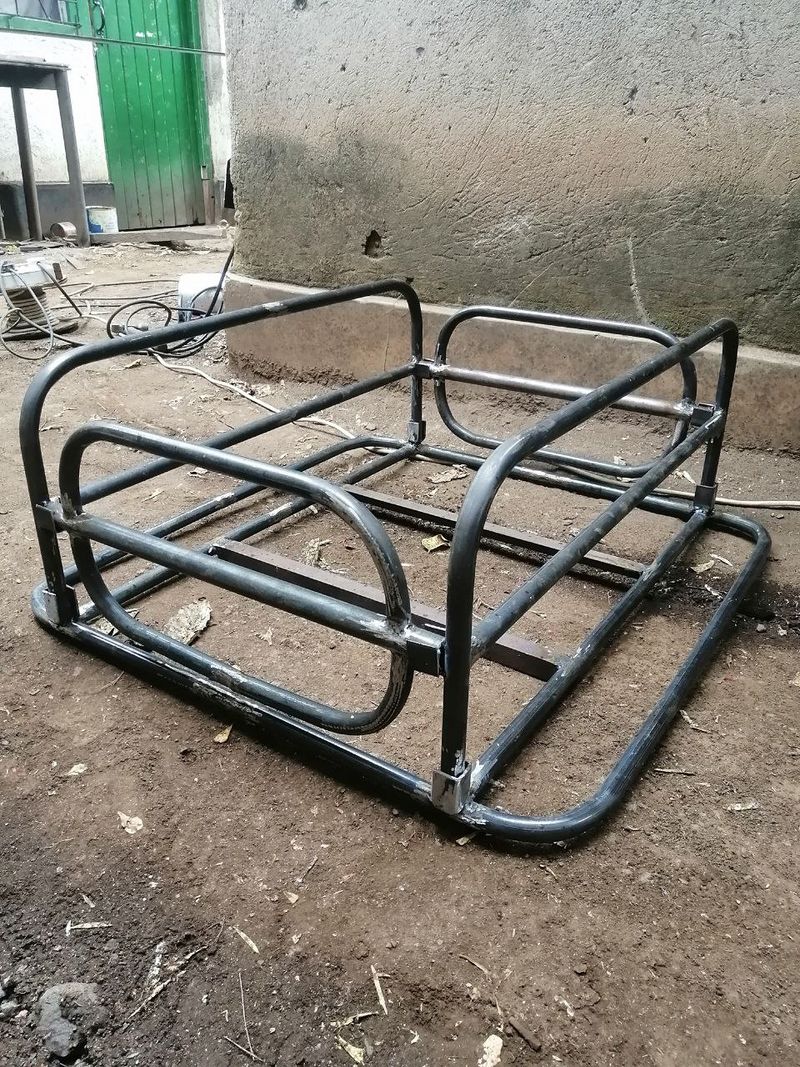
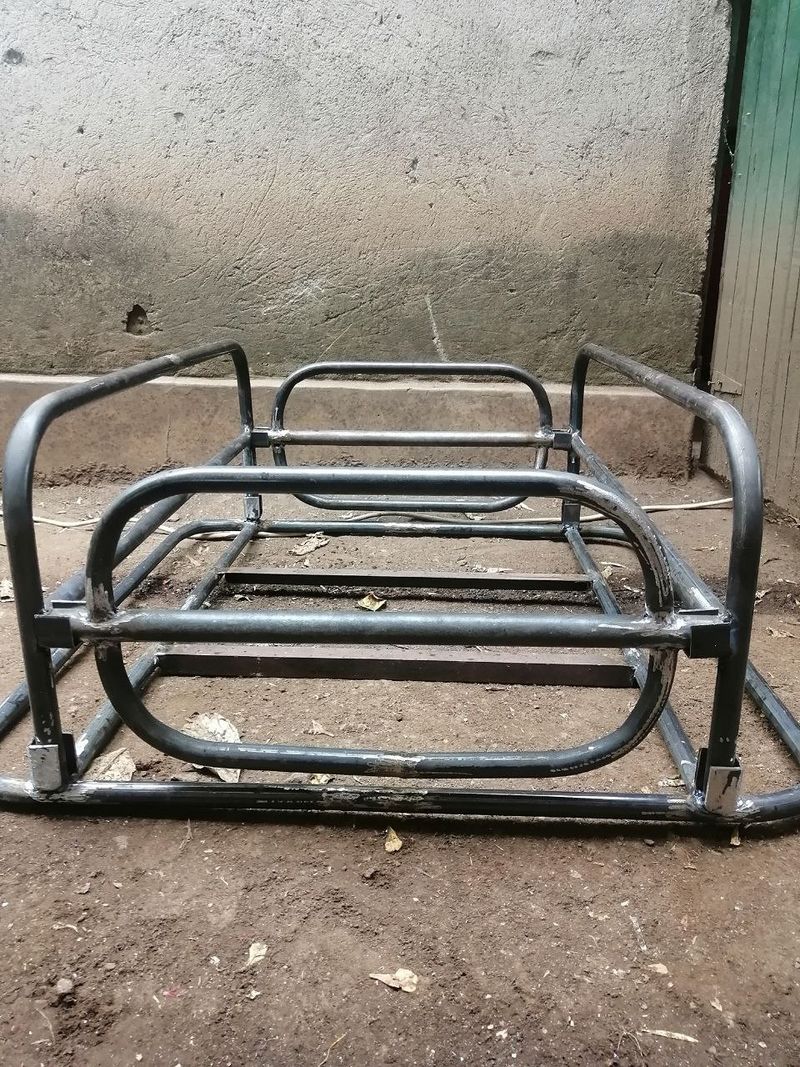
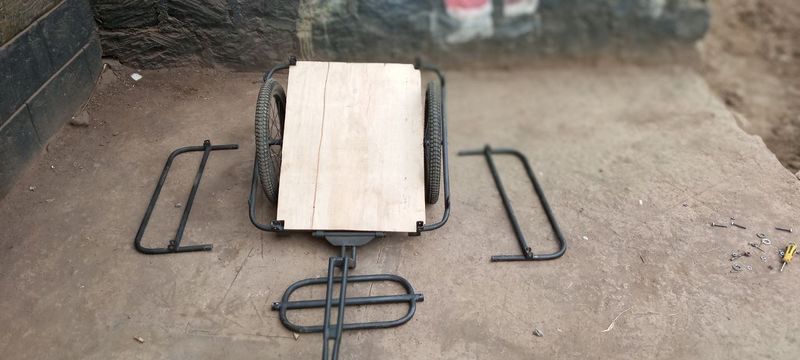
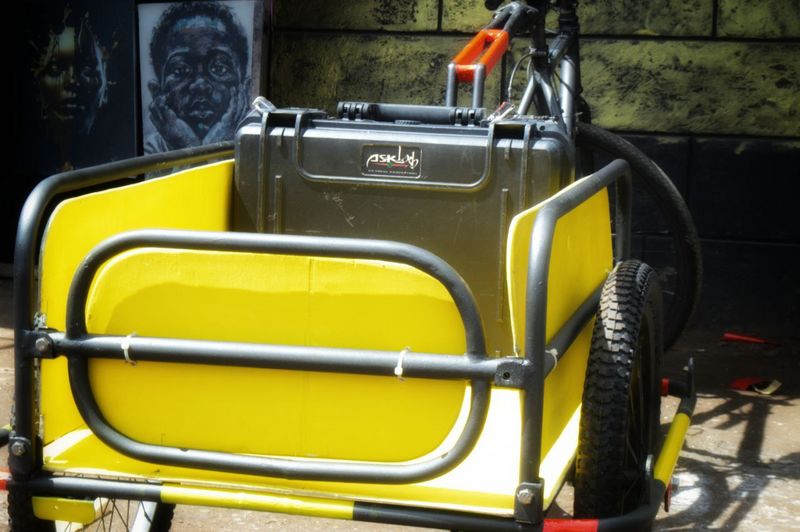
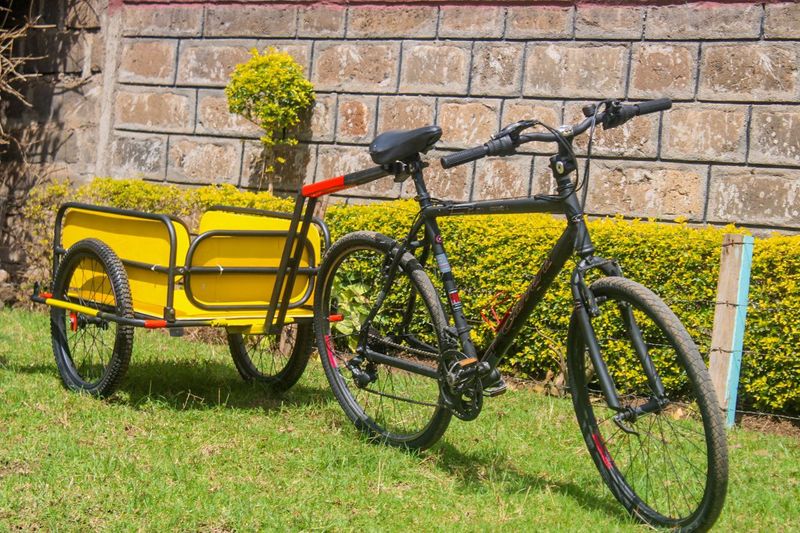
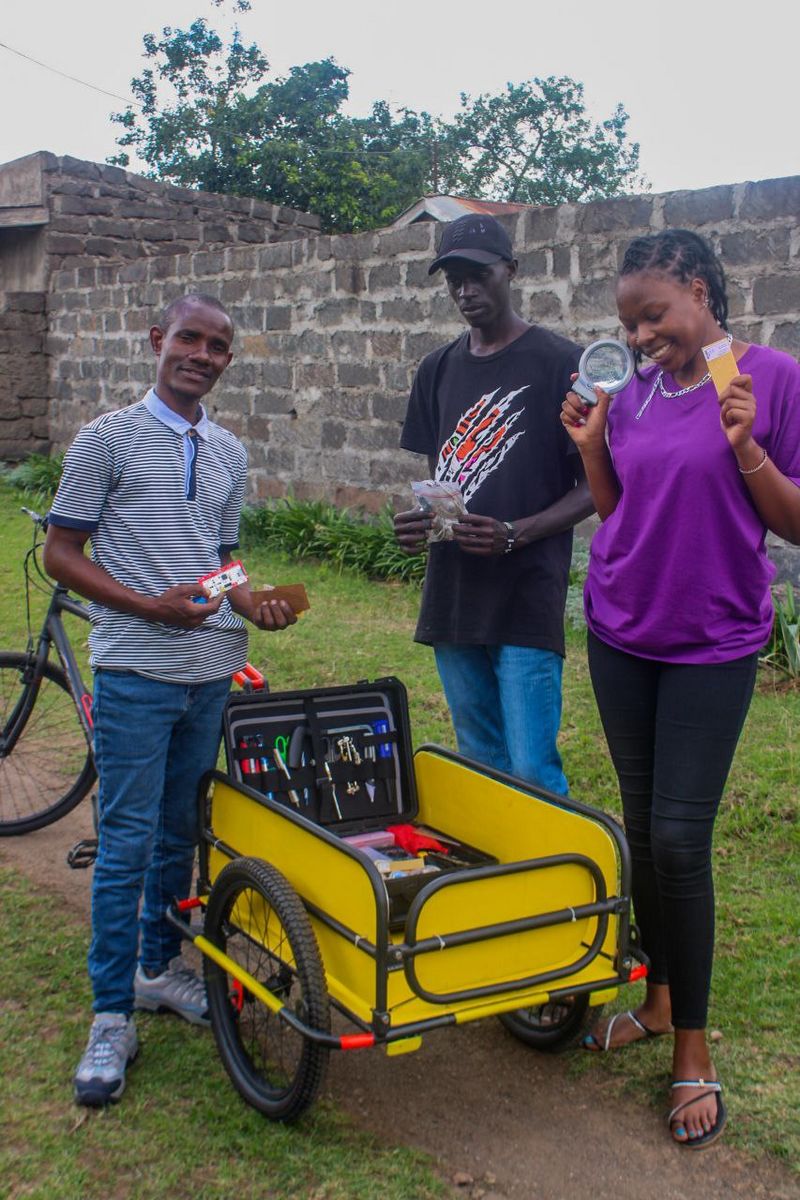
 Français
Français English
English Deutsch
Deutsch Español
Español Italiano
Italiano Português
Português